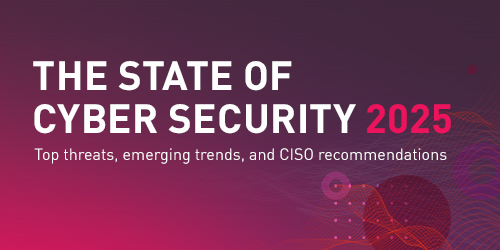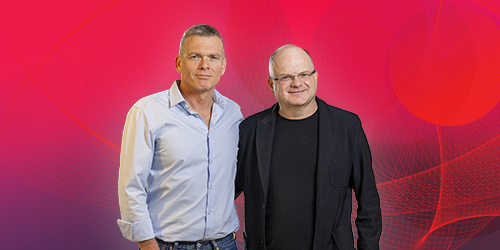Key Principles of Cloud Security Architecture
The following principles form the foundation of cloud security architecture:
- Security Controls: These consist of protective rules, procedures or tangible assets and measures that enforce control over data, users, and infrastructure to regulate the organization’s cybersecurity stance.
- Logging and Monitoring: Automated systems that continuously observe and track behaviors of connected systems and cloud services to ensure compliance and threat awareness. A common example is use of Security Information & Event Management (SIEM) systems as part of a broader monitoring initiative.
- Secure Development Methodology: These are standardized, repeatable practices to ensure the security of code, configurations, and baseline automation. Secure DevOps practices allow for consistent deployment across environments and adherence to relevant audit requirements and security standards.
- Identity & Access Governance: Control over user access, including individuals, devices, and services that access organizational cloud assets. Identity access management (IAM), which enforces user access rights and protocols, is a concrete implementation of this principle.
- Regulatory Compliance: Ensures the adherence to industry standards and regulatory demands by integrating those components into the architecture.
- Perimeter Security: Safeguards traffic flowing inbound and outbound from an organization’s cloud resources along with the entry/exit points at network edges.
- Cloud Asset Identification: An inventory of users, accounts or services, environments, policies, vulnerabilities, threats or risks, and other assets within the organization’s cloud presence.
- Segmentation and Microsegmentation: This is the division of architecture into smaller, isolated, easily managed partitions. This approach, one of the tenets of zero trust architecture, increases security at boundaries and reduces the likelihood of lateral movement by intruders and blast radius from any threats.
- Data Protection: Both data at rest and in transit are protected through encryption mechanisms to reduce the risk of sensitive data compromise and minimize the potential impacts of a data breach.
- Multi-cloud Visibility: Visibility across mutli-cloud environments, an increasingly popular approach to cloud architecture. Commonly relies on cloud security solutions and processes to adequately handle complex multiple cloud deployment strategies.
- Infrastructure as Code (IaC): DevSecOps and related secure SDLC practices rely on IaC practices and tooling to automate activities like configuration setup and updates, allowing for repeatable, secure infrastructure deployments.
- Agile Architecture: Ensures that architecture is designed with adaptability and flexibility in mind, without negatively impacting existing security measures.
At its core, the purpose of these principles is to uphold the Confidentiality, Integrity, and Availability (the CIA Triad) of cloud-based systems.
The Importance of Cloud Computing Security Architecture
Cloud solutions give organizations and users access to scalable services upon which to build mission-critical systems and applications. These solutions are appealing to organizations operating in the cloud by offering:
- Efficient, distributed, and resilient resource allocation.
- Extensive data storage and management capabilities.
- Scalable, cost-effective computation.
- Advanced workload and application hosting.
- Built-in basic security measures.
- Business continuity and disaster recovery features.
Developing a well-designed, secure cloud architecture requires that organizations both leverage these inherent capabilities of the cloud and implement additional controls and protective measures. The advantages of prioritizing cloud security architecture include the following.
Mitigating Cyber Risks
Cloud environments expose organizations to a wide range of cyber threats:
- Account hijacking attempts.
- Insecure APIs exposing sensitive information.
- Misconfiguration vulnerabilities.
- Insider threats.
- Denial of service (DoS) or distributed DoS (DDoS) botnet attacks.
- Cloud-based ransomware, malware or cryptojacking schemes.
- Third-party / supply chain risks.
A well-designed, secure cloud architecture works to mitigate these risks. It does so by implementing secure development practices from the outset, deploying security controls, limiting the scope of exposure, reducing vulnerabilities, generously applying encryption in sensitive data, and using relevant security systems to protect infrastructure, users, and customers.
Protecting Sensitive Data
Because organizations often store sensitive data in the cloud, cloud services and systems are a prime target for cybercriminals. Strong cloud security architectures are designed to protect this information from unauthorized access, breaches, or leaks. The consequences of failing to adequately defend cloud data include negative publicity harming the brand, breach of customer trust, loss of revenue, and legal penalties or fines.
Compliance with Regulations
Organizations operating in the cloud are often required to adhere to industry regulations, data privacy laws, or government requirements. They frequently store and use personally identifiable information (PII), financial data, proprietary data, algorithms or code, and other forms of sensitive information. Cloud security architecture helps to ensure compliance with regulatory requirements and avoid penalties, fines or reputational damage.
Service Models and Their Impact on Security
The various service models used by organizations drastically affect an organization’s approach to security. Those service models are infrastructure as a service (IaaS), software as a service (SaaS), and platform as a service (PaaS).
The shared responsibility model affects all three of these service models. Shared responsibility dictates that the cloud service provider (CSP) is responsible for the security of the underlying components and infrastructure that comprise the cloud service: software, computing, storage, databases, networking, and other hardware. The CSP’s customers are responsible for protecting the data and information stored and accessed in the cloud.
IaaS Security Considerations
IaaS providers enable organizations to build on top of core infrastructure building blocks, creating virtual networks, virtual machines (VMs), and storage. Securing IaaS requires a focus on strong data encryption procedures, container security, and protection of serverless assets. It further involves implementing network segmentation and micro-segmentation, configuring firewalls and virtual private networks (VPNs), and deploying intrusion detection systems (IDS) or intrusion prevention systems (IPS).
PaaS security considerations
PaaS provides the platforms, middleware, databases and other services organizations use for application development. To address PaaS security concerns, the focus moves to development processes and the application layer. Customers are responsible for securing applications, middleware, databases, configurations, and permissions. Here, strong access controls to code repositories, monitoring development pipelines, and validating user inputs are all necessary. Implementation of “shift left” or DevSecOps practices is vital to detecting and mitigating risks early in the development lifecycle.
SaaS security considerations
SaaS providers handle the bulk of the security requirements, as they deliver a complete, fully-managed application. Customers are responsible for implementing access controls, multi-factor authentication (MFA), and single sign-on (SSO) to protect accounts. The security concerns in SaaS shift towards regular audits of user roles and permissions, encryption of sensitive data, monitoring user behavior, ensuring data access and handling procedures maintain privacy and integrity, and securing third-party integrations.
Developing a Cloud Security Architecture with Check Point
Cloud technologies allow for rapid, on-demand provisioning of new resources to adapt to changing business or operational needs. Securing cloud architecture requires a thorough understanding of core principles like monitoring and identity access, implementing security controls, and making efforts to protect data and maintain compliance.
Check Point Software has developed best practices to implement cloud security architecture most effectively. To learn how, begin by examining Check Point’s Buyer’s Guide to Cloud Network Security and the related New Cloud Security Paradigm white paper for examples and deployment strategies.
Check Point’s expert security consultants can assess your organization’s present cloud strategy, identify potential vulnerabilities, and make recommendations to implement measures to effectively address security gaps and mitigate risk to the organization.





